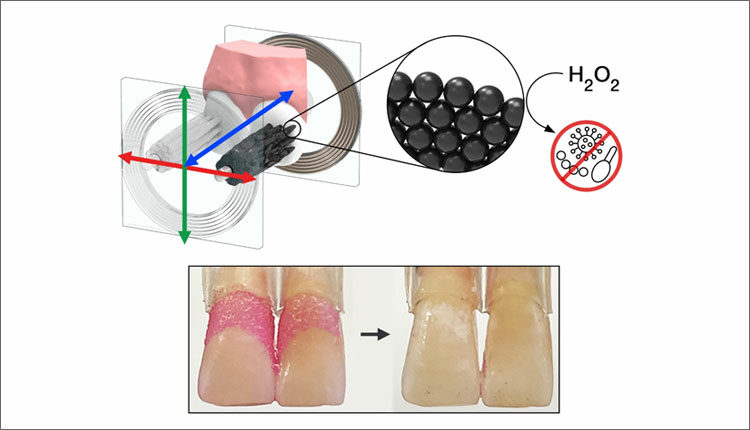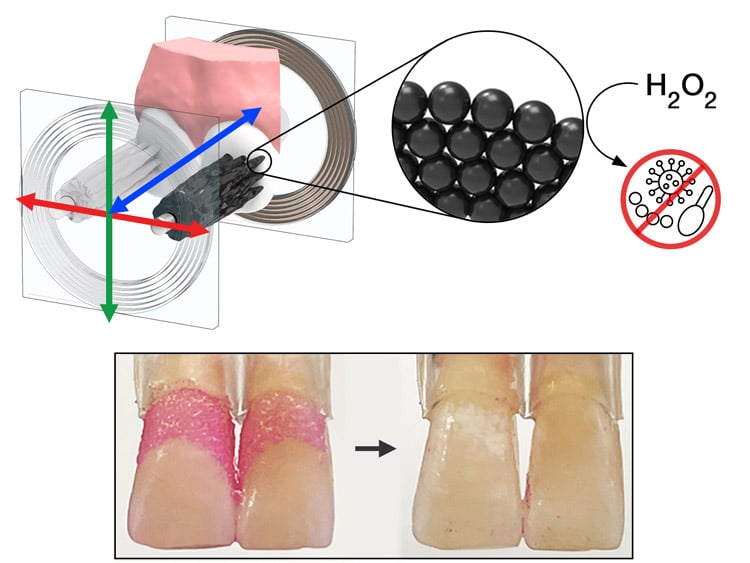
Plaque-Fighting Nanorobots Provide Personalized, Hands-Free Oral Care
Researchers from the University of Pennsylvania School of Dental Medicine and School of Engineering and Applied Science have shown that microrobots are capable of brushing and flossing human teeth. The hands-free system uses swarms of iron oxide nanoparticles with catalytic and magnetic activity to create bristle-like structures that can activate in synchronous motion. Initial testing indicates these microbots are capable of shape-shifting to reach the most challenging of spaces to remove oral biofilm. This development could be a game changer for individuals with disabilities or limited dexterity who struggle to perform daily oral hygiene.

Reporting in a proof-of-concept study published in ACS Nano, “Surface Topography-Adaptive Robotic Superstructures for Biofilm Removal and Pathogen Detection on Human Teeth,” the multidisciplinary team notes that manipulating the magnetic field can direct the microbots’ configuration and motion to form either a brush that sweeps away plaque, or elongated strings that can slip between teeth like floss. In both instances, a catalytic reaction within the nanoparticles produces an antimicrobial effect against oral pathogens.
After first optimizing the robot’s motions on a small slab of toothlike material, the investigators tested the system’s ability to adjust to the complex topography of teeth, interdental surfaces, and gingiva using models based on scans of human dentition. Finally, they evaluated the technology on real teeth that were mounted to mimic their natural position in the oral cavity. The researchers say the system can be programmed to perform nanoparticle assembly and motion control automatically, and that variations in the magnetic field can be used to precisely tune bristle stiffness and length for optimal personalized care.

